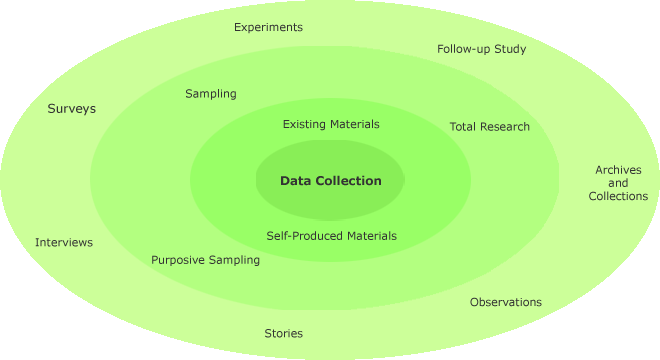Data Collection

Data collection methods are those rules and practices, which you use to collect empirical data. There are various forms of research data and data collection methods. The way you intend to use the data affects the data collection methods. You need to be aware of compatibility issues between forms of data and certain types of research aims, which influence the methods of data analysis you can use. Data collection methods can be structured as having either a broad focus or narrow focus depending on the choice of rules.
In the interactive graphic above, different levels of choices are presented through their distance from the centre of the interactive graphic; methods close to the centre have a broad focus while methods on the outer edge have a narrow focus. The data collection methods, presented in the circles, function as links to more detailed information.
You do not always need to collect the data used in the research project yourself. The data may already have been collected in a previous research projects by other researchers or by organisations empowered to collect data (e.g. poll organisations and civic authorities).
Data-specific concepts apply to certain types of data. The concept of a corpus, for example, refers to a finite group of written texts or recordings of speech in a particular language. You would use a corpus to explore assumptions of one or more languages or their characteristics.
Please note that you need to be aware that the use of existing concrete (previously collected) data will influence both the research aims and the data methods of analysis. Note also that if you use previously collected data you must gain the permission of the owner of the data.
